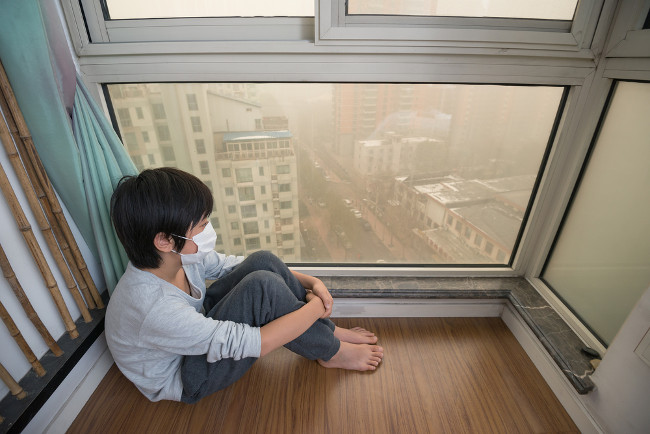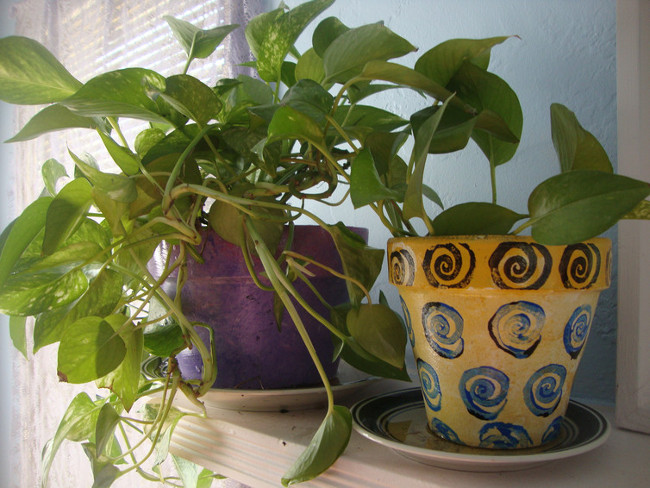7 simple ways to reduce air pollution in your home
According to a recent report from the Royal College of Physicians , outdoor air pollution causes about 40,000 deaths in the UK each year. This is a worrying number. However, this is just one of the first reports to recognize the importance of indoor air quality for the health of each of us. Because we often spend about 90% of the time in indoor spaces, whether at home, work or moving places.
Indoor air pollution is no longer a new phenomenon. Since early history, people have used wood, peat or coal to create heating heat. The cliffs in the cave, where people lived for many millennia ago, were covered with layers of soot (mace) and mummies from the Stone Age often suffered from black lungs.
A passage in Leviticus ( the third book of the Jewish Bible and the Old Testament ) shows that Jews recognized wet buildings as a danger to health. In the 18th century, "lack of ventilation" was confirmed to be the cause of an increased incidence of infectious diseases. Around the middle of the 19th century, it was reported that "the lack of ventilation . is more fatal than all other causes combined."
In the 1960s, real research on the quality of indoor air quality began. Initially, the study showed the dangers of radon and cigarette smoke before extending the study to formaldehyde compounds (formaldehyde) ( a common household chemical that can cause cancer diseases and At the end of the 1970s. At the end of that decade, in the 1990s, house dust mites and the syndrome of sick building syndrome (SBS ) were proved and finally , they focus on all kinds of allergies.

Source: Lorenz Timm / Shutterstock.
Interest in the new millennium is heading to developing countries, where about 3 billion people cook and heat by igniting and using conventional stoves made of wood and charcoal. This is the next cause of indoor air pollution, killing 4.3 million people every year.
According to the World Health Organization - WHO estimates, there are about 99,000 deaths a year in Europe due to indoor air pollution. Assuming these deaths are evenly distributed across Europe, the UK will have about 9,000 deaths each year. The law provides for a reduction in pollutants in the work environment, as well as a ban on smoking in public places, but it is extremely difficult to do so for any government. will try to set standards for air quality in private homes.
Why are the more modern houses polluted?

Typical houses contain many different sources of pollution such as heating, cooking, cleaning, smoke, perfume and furniture. Even just a simple move moves the dust particles. The need to improve the energy efficiency of buildings comes with concern that even more airy buildings adversely affect indoor air quality.
The air inside your home can contain a lot of unwanted "trash" such as nuts (solid or liquid particles), carbon monoxide (CO), nitrous oxide, formaldehyde organic compounds, gas radon, and volatile chemicals from scents in conventional cleaners.
Next is " bioaerosols - airborne microorganisms " - bacteria, fungi, viruses, house dust mites and debris from animal or animal hair. Even peeling an orange is proven to increase the number of microparticles at different levels.
The simple way to reduce air pollution at home
Although indoor air pollution is unavoidable, there are many ways to reduce air pollution:
1. Open the window to enhance air circulation. If you are cooking, using an exhaust fan is very important, because otherwise nitrogen dioxide (NO2) levels can exceed the pollution level in the street.
2. Do not smoke or burn candles in the house.If your home uses a wood-burning stove, make sure it is properly equipped and used.In addition, install a carbon monoxide detector (CO) by carbon monoxide that is considered a "silent killer" that leads to about 40 deaths a year in the UK.
3. Use hard surface floors .In addition to being easy to clean, the use of fabric mats can help pets' dirt and hair cling to the carpet can return to the air.

Resist formaldehyde organic compounds.(Photo source: Julie Jordan Scott, CC BY)
4. Keep indoor humidity between 30% and 50%, always ensure that ventilation is appropriate for wet areas such as bathrooms. This helps prevent mold - associated with respiratory symptoms. Some groups are more sensitive than others, including babies, children, the elderly and people with respiratory problems (such as allergies and asthma ).
5. Use a doormat to prevent dirt from entering your home and / or ask people to take off their shoes before entering your home.
6. Minimize the use of air cleaning or cooling products, especially those containing limonene ( helps create citrus citrus smell for space ).
7. Planting some plants in the house.NASA and the York University of BBC have studied that plants can reduce the concentration of formaldehyde organic compounds in the home.
You should read it
- Air quality index - What is AQI?
- Check the level of air pollution by Zalo
- See the air pollution index using BreezoMeter application
- Instructions on 6 ways to wash and sanitize carpets at home quickly and clean
- Items that can protect your health from air pollution
- This AI system can predict air pollution before it actually happens
- 7 ways to self-check out the very simple health situation at home
- Simple way to have a home health checkup in just 1 minute
May be interested
- The first aid procedure Heimlich had when he got a heterozygous object
 suffocation! it happens when the object gets stuck in the throat or the windpipe is blocked from the flow of air ... you need to know heimlich first aid procedure to be able to save yourself and save family members.
suffocation! it happens when the object gets stuck in the throat or the windpipe is blocked from the flow of air ... you need to know heimlich first aid procedure to be able to save yourself and save family members. - Even after quitting, after six months, the cigarette quality still exists around you
 despite quitting after 6 months, many toxins in cigarettes still exist around people who quit smoking. this is a potential threat for the smokers as well as relatives living around.
despite quitting after 6 months, many toxins in cigarettes still exist around people who quit smoking. this is a potential threat for the smokers as well as relatives living around. - Warning: Frequently drinking alcohol overdose reduces cognitive function in the elderly
 the article is a wake-up call for older people who have a habit of drinking alcohol too often.
the article is a wake-up call for older people who have a habit of drinking alcohol too often. - Fat in corn, coconut oil increases the risk of developing intestinal tumors
 the article is more or less as a wake-up call for those who abuse corn and coconut oil in their daily diet.
the article is more or less as a wake-up call for those who abuse corn and coconut oil in their daily diet. - How to prevent and treat dry eyes effectively
 eye dryness not only causes discomfort, it affects the quality of life, but it can also cause corneal ulcers, corneal scars leading to blindness. here's how to prevent and treat dry eye effectively.
eye dryness not only causes discomfort, it affects the quality of life, but it can also cause corneal ulcers, corneal scars leading to blindness. here's how to prevent and treat dry eye effectively. - New medical technology: Lasers plus 'mini' craniotomy helps burn and smoke brain tumors safely
 craniotomy 'mini lasers plus' has been a good sign for the medical community as well as patients with brain tumors.
craniotomy 'mini lasers plus' has been a good sign for the medical community as well as patients with brain tumors.






 How to reduce water pollution
How to reduce water pollution Few doubts of concrete can help limit air pollution
Few doubts of concrete can help limit air pollution This is a new nanomaterial that can reduce vehicle emissions pollution
This is a new nanomaterial that can reduce vehicle emissions pollution Simple way to measure air quality in your home
Simple way to measure air quality in your home See the air pollution index using BreezoMeter application
See the air pollution index using BreezoMeter application